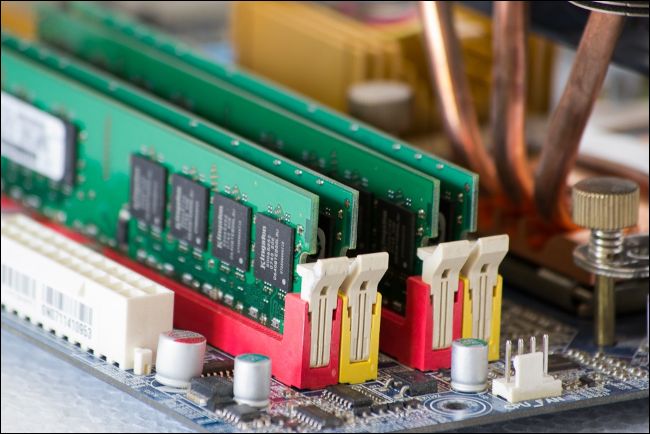
Some people say they have “a smartphone with 64 GB of memory”, but they don’t. Those people might have smartphones with 64 GB of disk space, or storage, but that’s different than memory. It’s time to clear up this tech term misconception.
Memory Is RAM, Storage Is Your Hard Drive
Memory–also called RAM–is short term. Computers (and smartphones) load data into memory when they’re working on it.

Disk space (also called storage, or hard drive space) is long term. Computers store data on their disk until they need to retrieve it later. This is where your apps and personal files are stored.

These are two different types of hardware, and they aren’t interchangeable.
Why It Matters
This isn’t just a pedantic argument about which word to use. It matters when attempting to describe smartphones, computers, and other devices.
For example, Apple makes a variety of iPhones with different amounts of storage. The iPhone 6s is available in with either 16 GB, 64 GB or 128 GB of storage. All iPhone 6s models have 2 GB of built-in RAM, or memory. It’s not correct to say “an iPhone 6s with 64 GB of memory”. Instead, it is correct to say “an iPhone 6s with 64 GB of storage and 2 GB of memory.”
You may be able to figure out what people are talking about when it comes to iPhones, but it gets complicated when talking about other devices. There are a lot of Android devices out there, with varying levels of storage and RAM. If someone says they’re using an Android phone with “4 GB of memory”, that would mean a nice high-end phone with a lot of RAM. If that person is using the term wrong, they could instead mean a low-end phone with very little onboard storage–and likely even less RAM. That’s a big difference!
Similarly: if someone says they’re using a computer with 16 GB of memory, that would generally mean they’re using a beefy computer desktop with a lot of RAM. If they’re using the term wrong, it could also mean they’re using a small Chromebook with very limited local storage and even less RAM.
This is why it’s important: If something is wrong with your computer, and you tell your technician/tech savvy friend/random Microsoft Store employee that your computer is low on memory, that means you need to install more RAM or close some programs. But, if you’re using the term wrong, it could mean that you just need to run Disk Cleanup and free up some space on their disk. If you want someone to accurately help you with your problem, it’s important to know which of those two things is causing it, and call it by the right name.

Yes, It’s a Little Confusing
Unfortunately, one reason people are confused about this is that storage is a type of memory. After all, they’re both even measured in the same units–GB, or gigabytes.
To make things even more confusing, we’ve started calling certain kinds of hard drives “flash memory”. An iPhone with 64 GB of disk space has 64 GB of flash memory. But that 64 GB of flash memory is long-term storage rather than short-term RAM. It’s hard to blame anyone for getting confused when the tech industry keeps throwing around confusingly similar terms.
But now you know the difference: Random access memory is distinct from hard disk space and flash storage. It’s important to know the difference, especially when you’re trying to solve problems with your computer.
Image Credit: Scott Schiller, Justin Ruckman